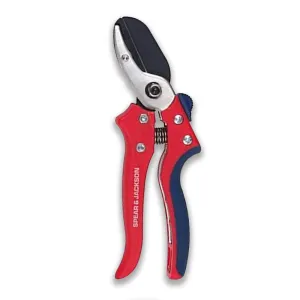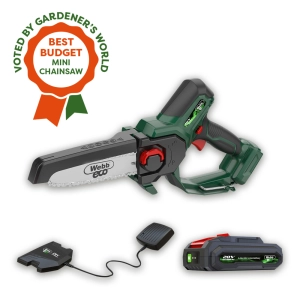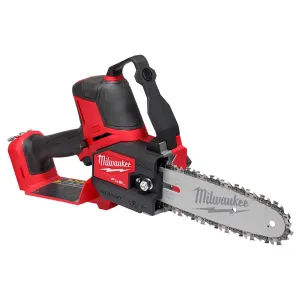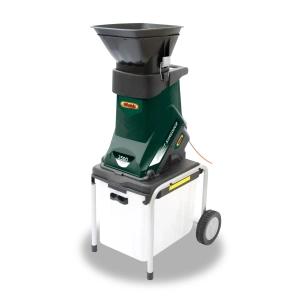You may already have a system in place to deal with garden cuttings and clippings, but if it overwhelms you throughout the growing season, or you’re about to tackle that overgrown hedge without a disposal plan, read on for the Agrigem guide to using or removing garden waste!
1. The green bin
Many council areas in the UK offer a green bin garden waste collection service – but not all. You can check if there is a service available in your area here: Dispose of garden waste - GOV.UK
If your council does offer this service, you may find that there are two different bin sizes available and that most collections occur once a month during the growing season only.
However, do check with your local council for the specifics for your area, including the cost. Most of the green garden waste collection services in the UK are paid services – and not free like the household rubbish or recycling collections.
To make the most of these waste collection systems, you will want to get as much green waste as possible into the bin. If you’re tackling a large cutting back project and have branches to dispose of, this might be tricky.
However, by taking the time to cut material up into small pieces with sharp cutting tools, you’ll find you can fit much more in.
If branches or woody stem cuttings feature frequently in your annual garden maintenance plans, you might want to consider a chipper or shredder (more on those later).
Take care to ensure only green waste goes into the bin, removing any wire and ties for example. Garden waste is usually shredded before being turned into compost or soil conditioner, so it’s important to keep your green bins free of any artificial materials.
2. The recycling centre
If you don’t have a green bin or access to this service in your area, you can always bag it up and take it to your closest recycling centre.
Nearly all UK recycling centres will take green garden waste. Use a tough garden waste or rubble bag to transport your green waste. Household bin bags will rip easily meaning you’ll inadvertently generate unwanted plastic waste.
Most DIY stores and garden centres sell tough reusable bags and sacks designed for transporting green waste. Don’t overfill your garden waste bag as this will make tipping it out at the recycling centre difficult.
3. Composting
For general garden cuttings, compost making is ideal. If you have the space available to make compost, creating a compost heap is easy.
You don’t need any special materials to create compost. All green garden waste will decompose in a pile without any assistance whatsoever. However, there are a few ways to speed the process, make it ergonomically easier to manage, and keep your garden tidy.
- Use a pre-made compost bin. There are many compost bin designs available at most garden centres. Compost bins are great for smaller gardens, will protect your waste from wind and most do not require assembly.
- Create a wire chicken fence compost heap. Select a quiet unused corner of the garden (or a spot against a fence or wall) and use chicken wire and posts / canes to create a compost bin. Ideally this should be a minimum of around 1m in diameter if circular. Always create compost on bare soil or grass to allow the worms to get to work.
- Build or buy a wooden compost bin. Wooden compost bins are perhaps the neatest and most aesthetically pleasing system for compost management. Pallets make good bin ‘sides’ as the gaps between the slats will allow air to circulate and rain to get in – speeding the decomposition process.
Whichever composting method you choose, ensure you cut garden material up into small pieces, removing or reducing any large roots and branches to speed the rate of decomposition.
Lids or coverings are helpful in increasing the temperature – which also helps speed the process. Compost will be ready in 9-12 months.
4. Mulching
Perhaps the simplest way to dispose of garden waste is to spread it straight onto your beds and borders.
Using green garden waste as mulch helps prevent moisture loss and weed growth as well as adding aesthetic value.
Follow the same rules for binning and composting, and always cut green waste up into small pieces to aid decomposition.
Be mindful of transferring seeds from your cuttings when mulching to prevent unwanted seedlings springing up in your beds.
5. Chipping and shredding
Probably the most elegant solution when it comes to disposing of green garden waste (and that Christmas tree) is to invest in a chipper or shredder.
Even if you’re an avid composter or plan to use your green bin, shredding waste will help it decompose quickly and reduce the space you need to let it decompose.
Impact shredders can reduce waste to 1/10th its original size. Most will shred twigs and small branches of up to 45mm diameter, making them useful for all but the biggest pruning and cutting back projects.
Drum chippers and shredders are heavy duty machines capable of chipping larger branches quickly creating mulch or fast-rotting material for compost. Most will handle an average Christmas tree stem without difficulty.
6. Burning
The last resort when it comes to disposing of garden waste - burning will help get rid of excess green waste but be careful! Bonfires are only legal if they do not create a nuisance, harm people’s health or cause pollution.
Even if you can rule out the first two, bonfires do create smoke pollution – especially if any of the waste material is damp.
Only proceed with burning garden waste if you can be confident that you won’t fall foul of the law. If the smoke and smell from a bonfire could affect a neighbour, bonfires are best avoided.










